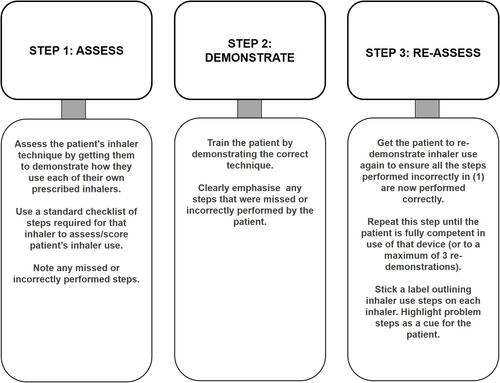Figures & data
Figure 1 Assessment of patient needs and provision of COPD interventions: (A), pharmacological; and (B), non-pharmacological. Shaded boxes highlight the key clinical assessments conducted by the “consultant” pharmacists. The unshaded boxes to the right of the arrows provide a summarized version of interventions provided to address key issues that became apparent through the systematic assessment. PR=Pulmonary Rehabilitation.

Figure 2 Inhaler technique assessment and education. This figure highlights the evidence-based three-step “show and tell” sequential process followed to assess and train patients at the baseline visit and, if required, at follow-up face-to-face visits. Based on the results published by: Basheti IA, Armour CL, Bosnic-Anticevich SZ, Reddel HK. Evaluation of a novel educational strategy, including inhaler-based reminder labels, to improve asthma inhaler technique. Patient Educ Couns 2008;72:26–33.Citation85

Table 1 Comparison of Outcome Measures at Baseline and Study End
Table 2 Inhaler Technique – Mean Number, Range and Percentage of Correct Steps at Each Visit
